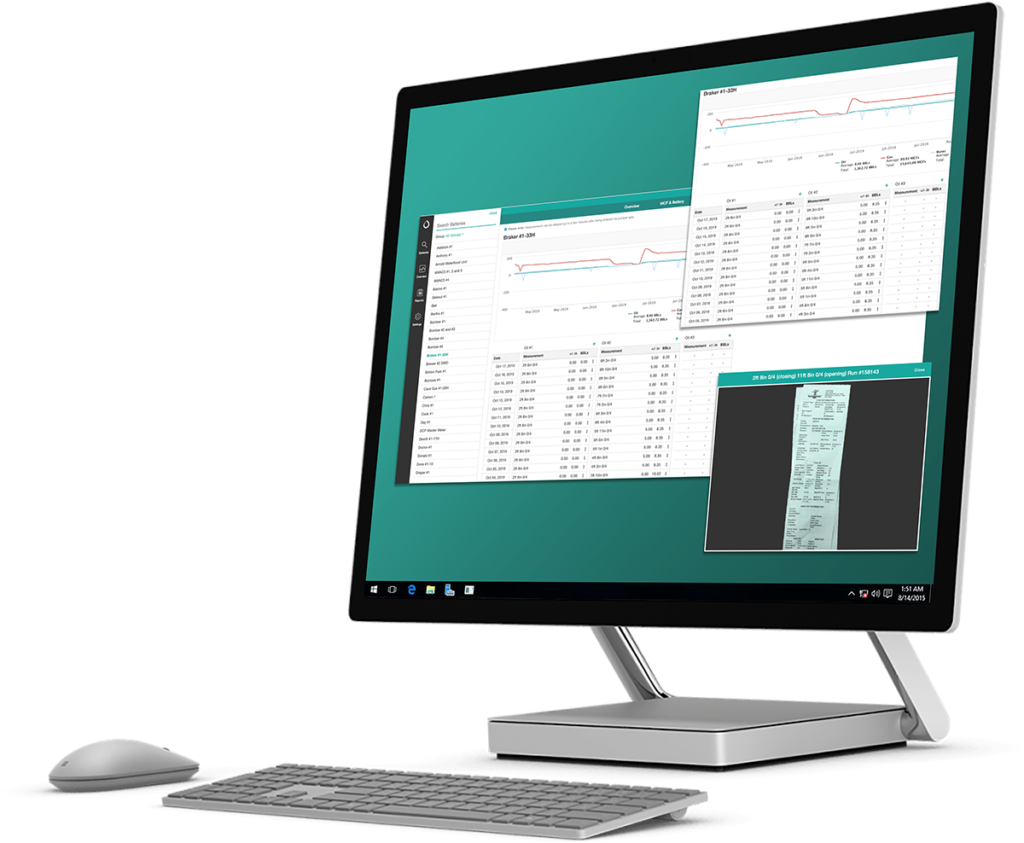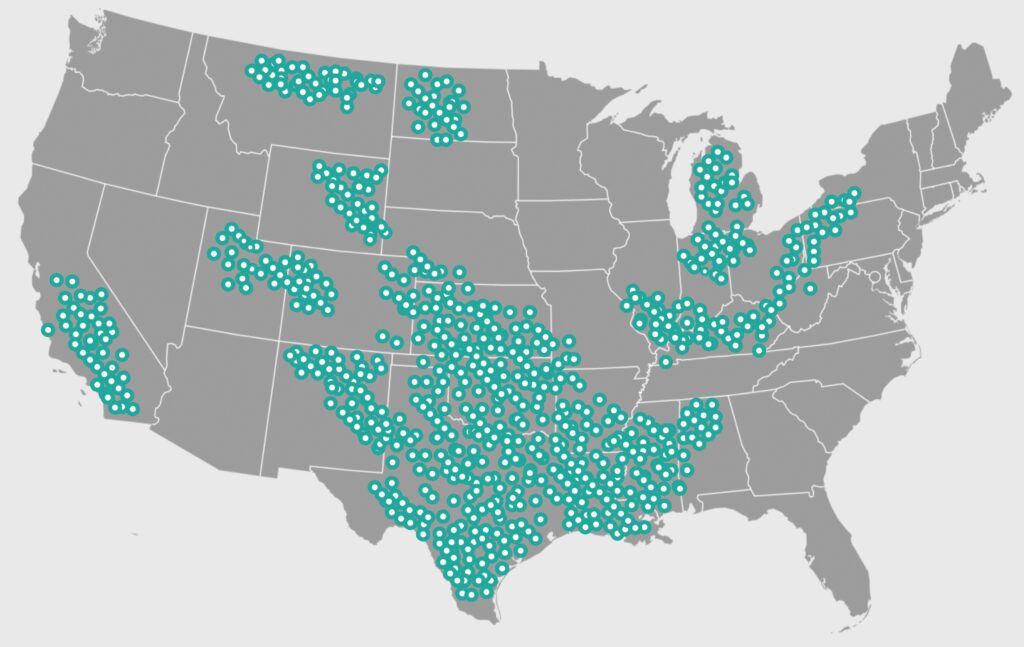Well records provide a history of a well, its equipment, and what it has produced. With a full set of well records in hand, it’s often possible to make rough predictions about how a well will act in the future, when equipment will need to be replaced, and how to best operate the well. That makes accurate and up-to-date well records essential.

While the official records will usually be maintained by the producing company, it can be helpful to get a general idea of the information contained within the well records and how it can be used.
Well Records
While the official records will be kept by the producing company, it’s usually a good idea for the pumper working a well to keep a record of their own (or make things simple for your whole team and check out the GreaseBook oil and gas production reporting software app for your smart phone…) Together with regular visits, these records can be used to get a unique feel for what’s happening with a well. It’s also usually possible to get a look at the official records of the well you work on, for a fuller look at its history and behavior.
An example well pulling record.
| Date | Lease | Well ID | Pulled Tubing | Pulled Rods | Pump replaced | Pump length | Pump dia. | Notes |
| 2-21-11 | Thomas | 1 | — | X | X | 1 1/8 | 12 ft 4 inches | Pump valve worn out |
| 5-4-12 | Thomas | 6 | X | X | — | 1 1/4 | 13 ft 4 inches | Holed tubing |
Drilling Records
It’s rare that a pumper is involved with the drilling of a well. Looking at drilling records can be helpful, however, as it helps to see how a well has changed over time. The drilling record will contain information about the well’s completion, as well as the volumes of oil, water, and gas produced. It will also provide basic information about the well, such as the depth and diameter of the casing, and specifics about casing perforations. It will also be updated with any changes made to the well that could affect production.
Wellhead And Pumping Unit Records
Information about the wellhead and pumping unit may be critical in many situations. These records will contain information like the manufacturer of the pumping unit and records of service. It will also contain some information that can be helpful in day-to-day operations, such as the direction of the pumping unit’s rotation, stroke length, strokes per minute, and more.
Wellhead records will provide information about all the wellhead equipment and components that are visible, and which a pumper may have to service or monitor. Wellhead problems tend to be emergencies, and it’s usually helpful to have the necessary information at hand and easily accessible. Pulling tubing or rods and other maintenance involving the wellhead can often be expensive and have an impact on production. The wellhead records will include information such as the length of polished rods and the size of the rod liner, sizes for various gaskets used, stuffing and packing information, and details on other components.
Casing And Tubing String Records
Careful casing and tubing records are essential, as the diameter of the casing and tubing string will affect every piece of equipment in one way or another. The height of casing perforations will also affect the placement of tubing perforations, and therefore the length of the rod string. Most companies will have specific policies regarding the placement of the tubing perforations relative to the casing perforations. The number and placement of perforations can also be important information. If the well is ever worked over and the casing perforations are changed, that information will also be recorded in the casing records.
Detailed information about the tubing string will be found in the tubing records. These records will list the length of every joint of tubing as well as the quality of the joints. It will also list information about hold downs that may be used with the tubing string, including how to release them. Details about packers used with the string will also be listed in the tubing records. A pumper will most often have to update the description and count of the tubing string and maintenance records.
Those records should be exact. Each joint should be listed in the order it is run into the whole. Once the tubing string has been run downhole, the tubing joints will need to be listed in reverse order. In other words, they need to be listed from the top down so that they can be tracked as the string is pulled in the future.
There’s a couple of different ways to measure tubing joints. It’s likely that the pumping company has a particular method that they’ll want to use consistently across all wells. Tubing joints can be measured including the threading, not including the threading, or from the top of one collar to the next. The last method is the most accurate, but the joint does have to be lifted off the slips in order for it to be measured that way. The threading of a joint is about 1 ½ inches long, and most often joints are measured with the threads included. If either of the first two methods are used, the difference is fairly easy to figure out. For example, if the joints are measured including threading and there are 100 joints in the well, the tubing perforations will actually be 15 feet higher than the calculated length.
The tubing records will also contain details about a holddown at the bottom of the tubing string. Tubing strings might have a holddown at the bottom to reduce the amount of ‘breathing,’ or stretching and contracting. Tubing strings can have tens of thousands of pounds of pressure on them, which is important to know before attempting to pull the string.
Sucker Rod Records
Sucker rods are in just a few standard lengths, of 25 ft, 35 ft, and 37 ½ ft. That makes recording specifics about the rod string a little bit easier than it is to describe a tubing string. You can simply write down the number of each length in the order they were sent into the hole. Rods will generally stretch after some use, so the recorded length is only an approximation in any case.
The rod string records will also record specifics of the downhole pump. The length of the new pump’s stroke is recorded and compared to the old pump. Recording the date of each pump replacement is obviously important; among other things it can be used to predict when a new pump will be needed. Keeping track of a pump’s life can also help rule out some problems; if the pump usually lasts for a few years and it was just replaced a few months ago, it’s not likely to be the cause of current production problems. A good record can also help identify chronic problems that can be addressed, extending the life of the pump and other components.
Electrical Equipment Records
Information about the electrical systems around the lease may have their own records, or they may be included with the motor or prime mover they’re associated with. It’s usually a good idea to record as much detail about fuses, motors, and control boxes as possible, particularly if you’re not too knowledgeable about electrical systems or automation. Those are usually worked on by specialists, but it can usually be helpful to be able to provide them with some basic information before they arrive on site. That information can include fuse ratings and size, types of time clock, safety breakers, and style of control box.
Is your appetite for oil & gas operating knowledge insatiable like ours? 😀 If so, check out these related articles: The Basics Of Keeping Records For Oil & Gas Production, Operational Records For Oil & Gas Production Wells and, Tracking Inventory In Oil & Gas Production – they’ll be sure to pump you up!!!








